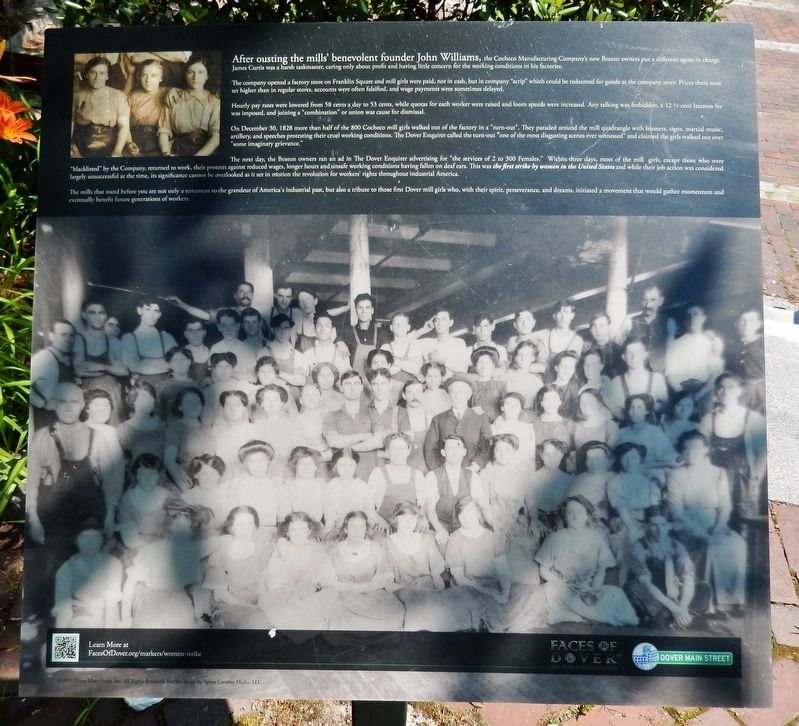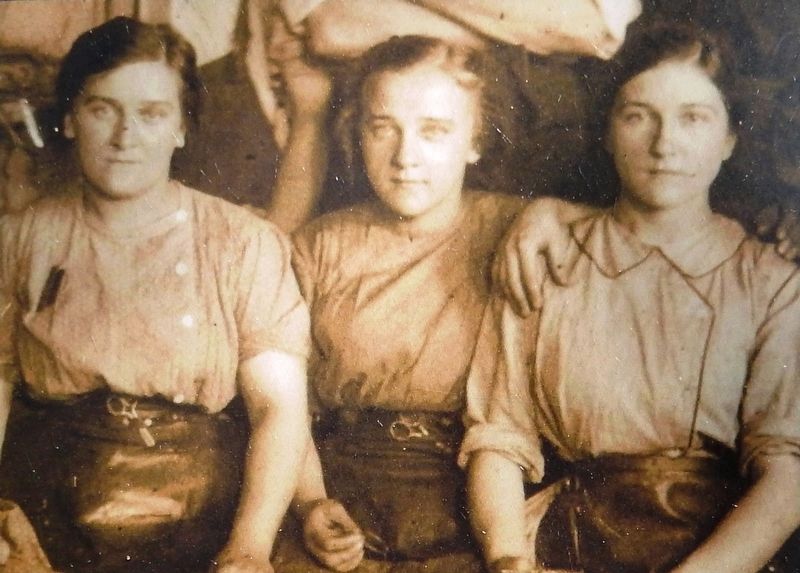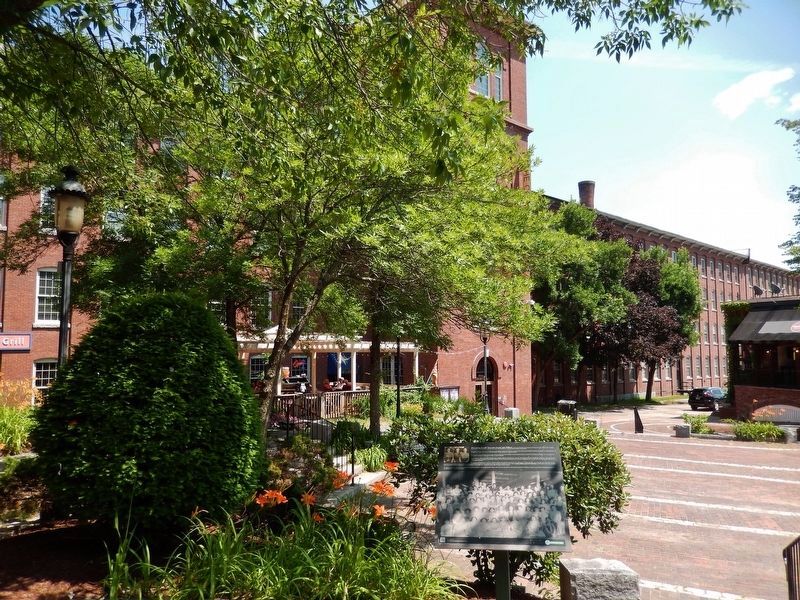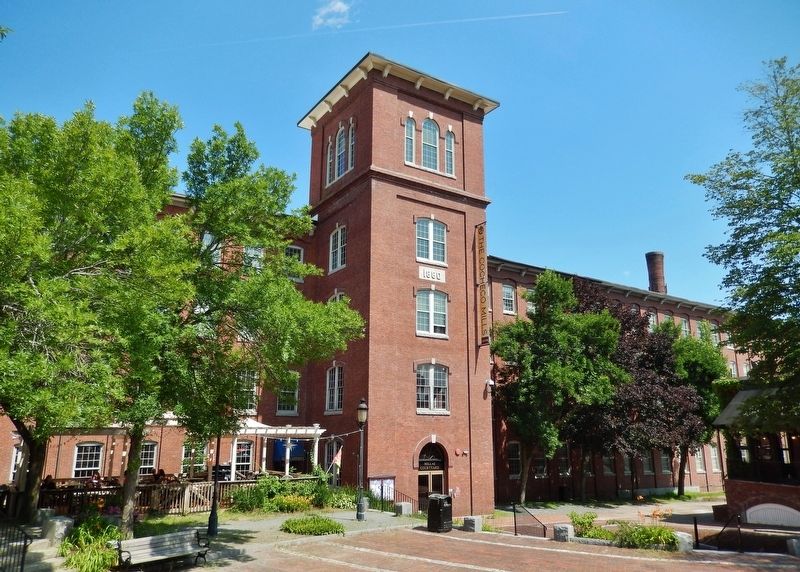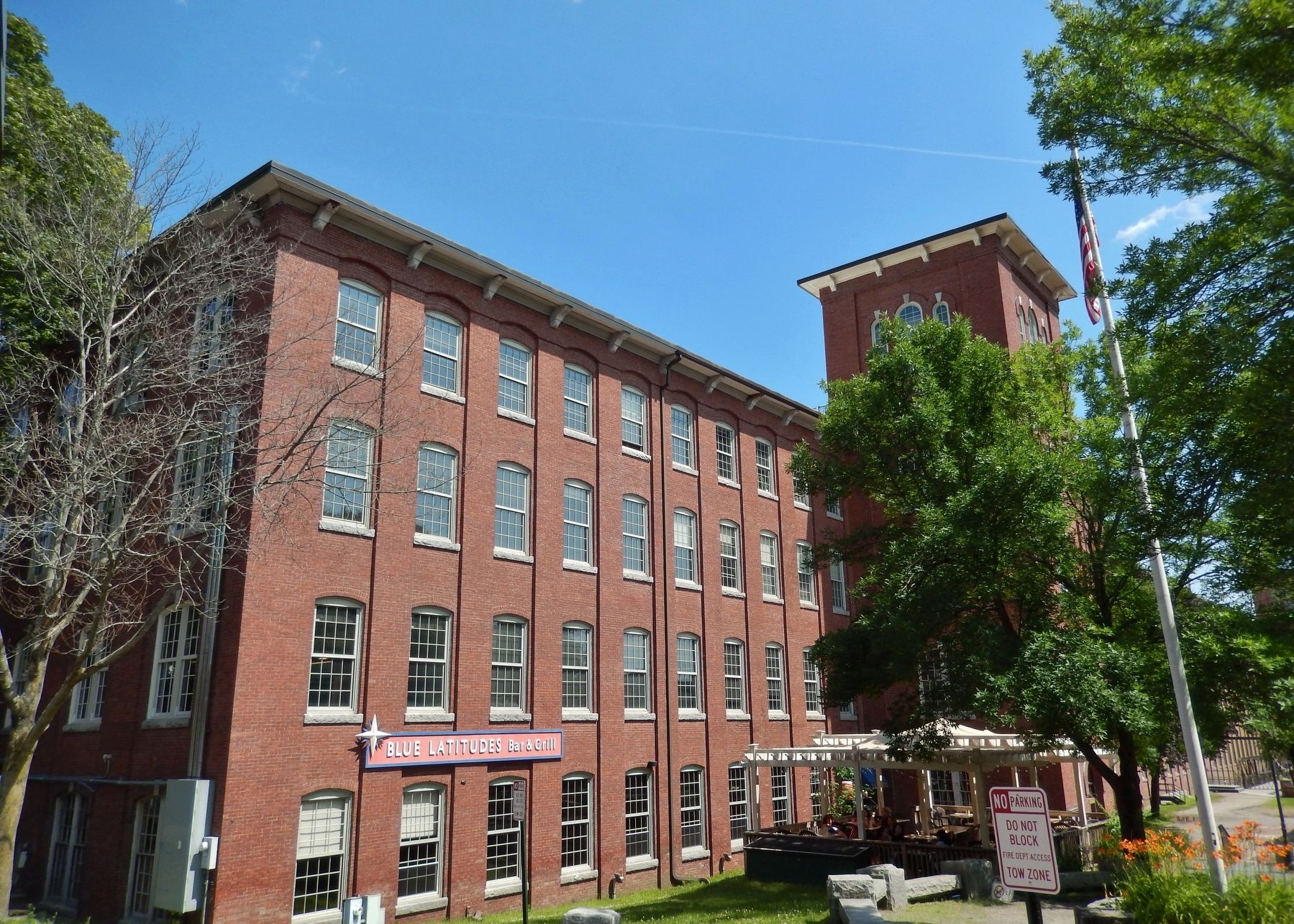Dover in Strafford County, New Hampshire — The American Northeast (New England)
The Dover Mill Girls
First Strike by Women in the United States
After ousting the mills' benevolent founder John Williams, the Cocheco Manufacturing Company's new Boston owners put a different agent in charge. James Curtis was a harsh taskmaster, caring only about profit and having little concern for the working conditions in his factories.
The company opened a factory store on Franklin Square and mill girls were paid, not in cash, but in company "scrip" which could be redeemed for goods at the company store. Prices there were set higher than in regular stores, accounts were often falsified, and wage payments were sometimes delayed.
Hourly pay rates were lowered from 58 cents a day to 53 cents, while quotas for each worker were raised and loom speeds were increased. Any talking was forbidden, a 12˝ cent lateness fee was imposed, and joining a "combination" or union was cause for dismissal.
On December 30, 1828 more than half of the 800 Cocheco mill girls walked out of the factory in a "turn-out". They paraded around the mill quadrangle with banners, signs, martial music, artillery, and speeches protesting their cruel working conditions. The Dover Enquirer called the turn-out "one of the most disgusting scenes ever witnessed" and claimed the girls walked out over "some imaginary grievance."
The next day, the Boston owners ran an ad in the Dover Enquirer advertising for "the services of 2 to 300 Females." Within three days, most of the mill girls, except those who were "blacklisted" by the Company, returned to work, their protests against reduced wages, longer hours and unsafe working conditions having fallen on deaf ears. This was the first strike by women in the United States and while their job action was considered largely unsuccessful at the time, its significance cannot he overlooked as it set in motion the revolution for workers' rights throughout industrial America.
The mills that stand before you are not only a testament to the grandeur of America's industrial past, but also a tribute to those first Dover mill girls who, with their spirit, perseverance, and dreams, initiated a movement that would gather momentum and eventually benefit future generations of workers.
Erected 2015 by Faces of Dover, and Dover Main Street, Inc. (Marker Number 11.)
Topics. This historical marker is listed in these topic lists: Industry & Commerce • Labor Unions • Women. A significant historical date for this entry is December 30, 1828.
Location. 43° 11.828′ N, 70° 52.428′ W. Marker is in Dover, New Hampshire, in Strafford County. Marker can be reached from the intersection of Central Avenue (New Hampshire Route 9) and First Street, on the left when traveling south. Marker is located in the Cocheco Mill Courtyard. Touch for map. Marker is at or near this postal address: 427 Central Avenue, Dover NH 03820, United States of America. Touch for directions.
Other nearby markers. At least 8 other markers are within walking distance of this marker. Dover's Black Day (within shouting distance of this marker); The Two Morrill Blocks (about 300 feet away, measured in a direct line); Dover's Early Settlers (about 300 feet away); Early 19th Century Storefronts (about 400 feet away); Dover’s Two Largest Retail Chain Stores (about 400 feet away); The American House Hotel (about 500 feet away); The New Depot on Third Street (about 500 feet away); Merchants National Bank (about 500 feet away). Touch for a list and map of all markers in Dover.
Related markers. Click here for a list of markers that are related to this marker.
Also see . . .
1. First Strike by Women in the United States. Faces of Dover website entry (Submitted on July 3, 2020, by Cosmos Mariner of Cape Canaveral, Florida.)
2. The Dover Mill Girls Walk Out in America’s 1st Women’s Strike. New England Historical Society website entry:
The Dover mill girls, mostly from farms in New Hampshire and southern Maine, were paid 47 cents a day plus room and board. Two cents were taken from their paychecks for medical insurance. They needed it. The girls worked with only one break from 6:30 a.m. to 6:30 p.m. They breathed noxious fumes and worked with noisy, dangerous machinery that mangled fingers and limbs. (Submitted on July 3, 2020, by Cosmos Mariner of Cape Canaveral, Florida.)
Credits. This page was last revised on July 5, 2022. It was originally submitted on July 2, 2020, by Cosmos Mariner of Cape Canaveral, Florida. This page has been viewed 575 times since then and 46 times this year. Photos: 1, 2, 3, 4, 5. submitted on July 3, 2020, by Cosmos Mariner of Cape Canaveral, Florida.
